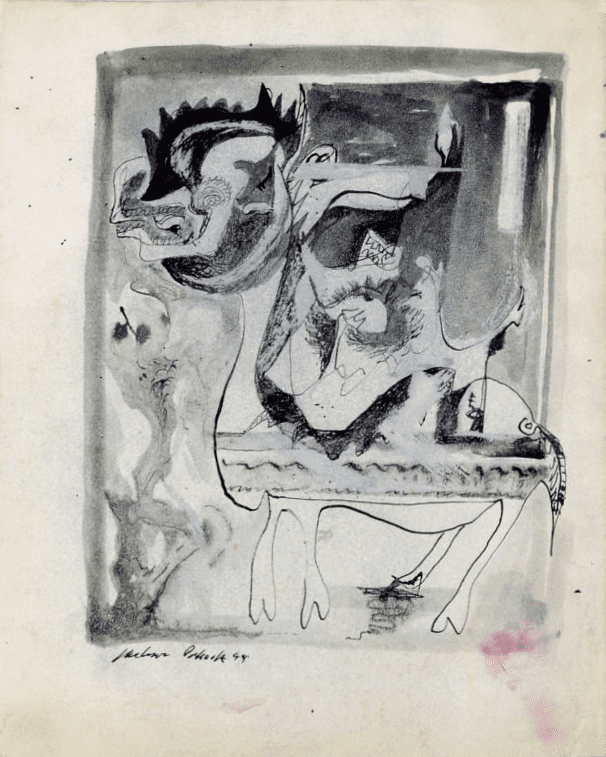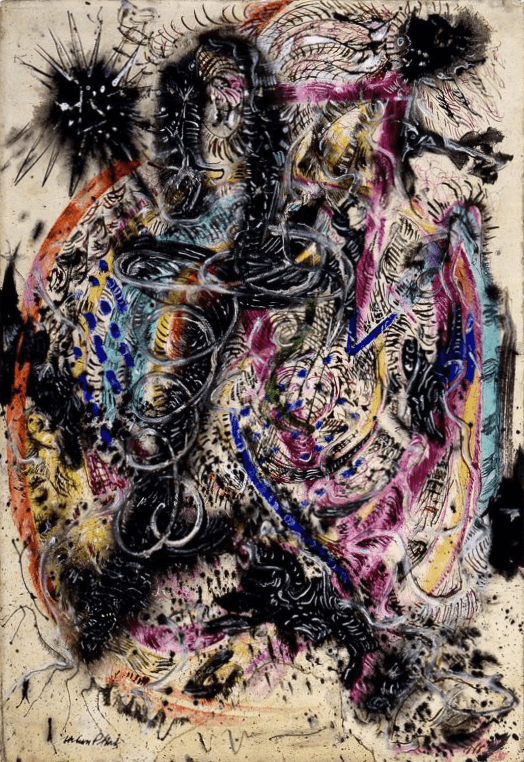Gesture was the key expressive tool in the work of the most prominent representative of American Abstract Expressionism, Jackson Pollock. Pollock underscored horizontality and oneness as essential elements of his method, moving around the edges of large, unprimed canvases spread on the floor of his barn studio and using brushes, sticks, and even turkey basters to pour, splatter, and drip oil and enamel paint onto them. His webs of intertwined drips are the combined results of rapid body movement and the law of gravity. The “allover” technique he initiated in 1947 revealed a shift in Abstract Expressionism from automatism to the autographic, signature gesture, identifying the creative act as an expression of individual experience. “On the floor,” said Pollock, “I am more at ease. I feel nearer, more a part of the painting, since this way I can walk around it, work from the four sides and literally be in the painting.”
Pollock’s technique, which evolved from Surrealist automatic drawing and was also influenced by Native American sand painting, resulted in borderless compositions of interpenetrating lines, seeming to represent a space with no differentiation between top and bottom, inside and out. The elongated Horizontal Composition, apparently cut down from an even larger work, appears to extend into infinite space. Three colors form a finely entangled web against a rust-colored background. Blue and black swirls of enamel paint bleed into one another, superimposed by delicate white threads. The careful distribution of light and dark tones conveys a sense of depth and vitality. The work embodies what Pollock called “energy and motion made visible . . . memories arrested in space.”
Adina Kamien









